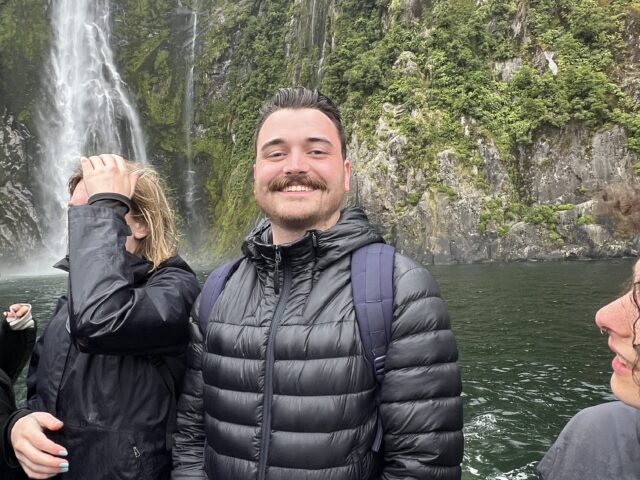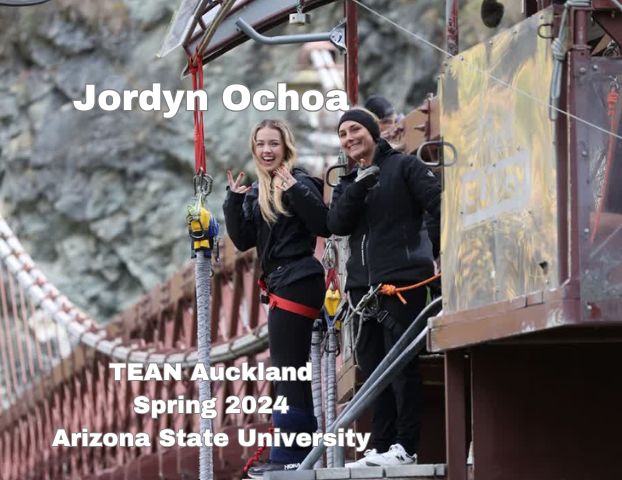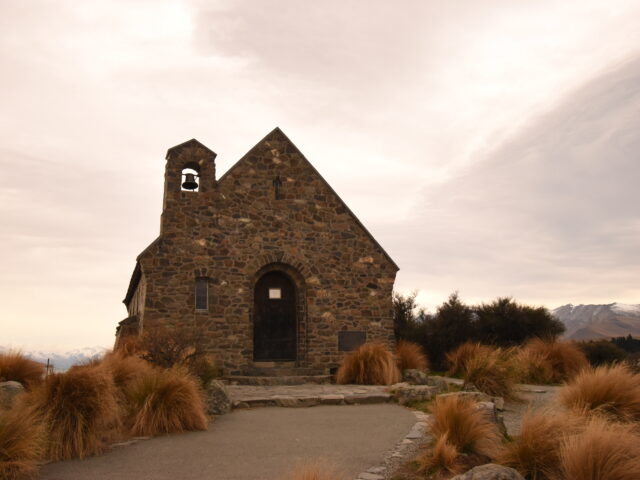Earlier this semester, I took a field trip with my Indigenous Science class to Kaikoura, a lovely little coastal village north of Christchurch. Out in the field, we were able to see our studies come to life in the meeting ground of Maori culture and modern conservation: the Kaikoura rahui. A rahui, or temporary restriction, is a technique early Maori used to allow food populations to replenish, to revive their mauri, or life force, or in recognition of cultural significance of events or people. Today, this restriction is integrated into the legal system, and a rahui has been established at Kaikoura for the protection of local abalone, or paua. Our class participated in this meeting of cultures, aiding in the conservation effort in light of Maori values.
Our first day, we were welcomed to the field station and, in the Maori style of introduction, shared our mihimihi. A mihimihi begins, “The mountain is…the river is…”, establishing identity based on where the speaker is from and only ending with your family and your name. In the Maori worldview, all parts of the world, from the mountains and trees to animals and people, are connected in a common genealogy or whakapapa. If everything is dependent on everything else, conservation of the natural environment is vital to the balance of our world.
European-style conservation has only recently adopted this holistic view of the environment. The area holds a marine reserve and other marine protection measures already. The Kaikoura rahui was initially met with resistance, but now locals have taken ownership of the conservation effort, and the rahui has been renewed multiple times, giving the paua more time to replenish. We were able to assist in this effort in a seamless unification of Western science and Maori technique.
First, we glued tags to the shells of paua that had been raised and were ready to be released. We learned the proper techniques to pry the paua off the sides of the tank without hurting them, recorded their length, dried off the smoothest part of their shell, added a drop of superglue, smoothed the numbered tag into place, and voila: the paua has an identity. Scientists use these numbers to monitor the effect of the rahui. Does it actually protect the paua? How fast are these paua growing? How do they disperse? Everything can be tracked and observed.
The paua release followed traditional Maori technique. We split bull kelp into bags, then turned the bags inside out so the paua inside would have algae and other nutritious snacks to munch on until it was ready to fend for itself. We cinched the bag with seaweed, then slashed gashes in the side. The bags were placed out into the study areas. The paua could hide in their protection until they were ready to creep out through the holes and nestle under a convenient rock.
Kaikoura management operates under the motto “ki uta ki tai,” or “from the mountains to the sea.” The land in its entirety has always been important to the Maori. Parts of an ecosystem depend on one another, and ecosystems depend on neighboring ecosystems. By incorporating this emphasis on interdependence with modern scientific technology, New Zealand is upgrading its approach to conservation. Thanks to its protective measures, our class was also able to enjoy some impressive whale spouting and adorable fur seal pups, not to mention the beautiful views that greeted us on every side. New Zealand is working hard to restore its ecosystems, earning its right to remain famous for its beautiful natural environment.
Elizabeth Jacobsen is a student from Williams College and a TEAN Featured Blogger. You can also read her blog, There and Back Again while at the University of Canterbury. Elizabeth is currently studying abroad with TEAN in Christchurch, New Zealand.










